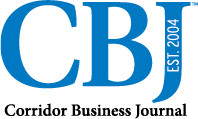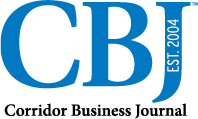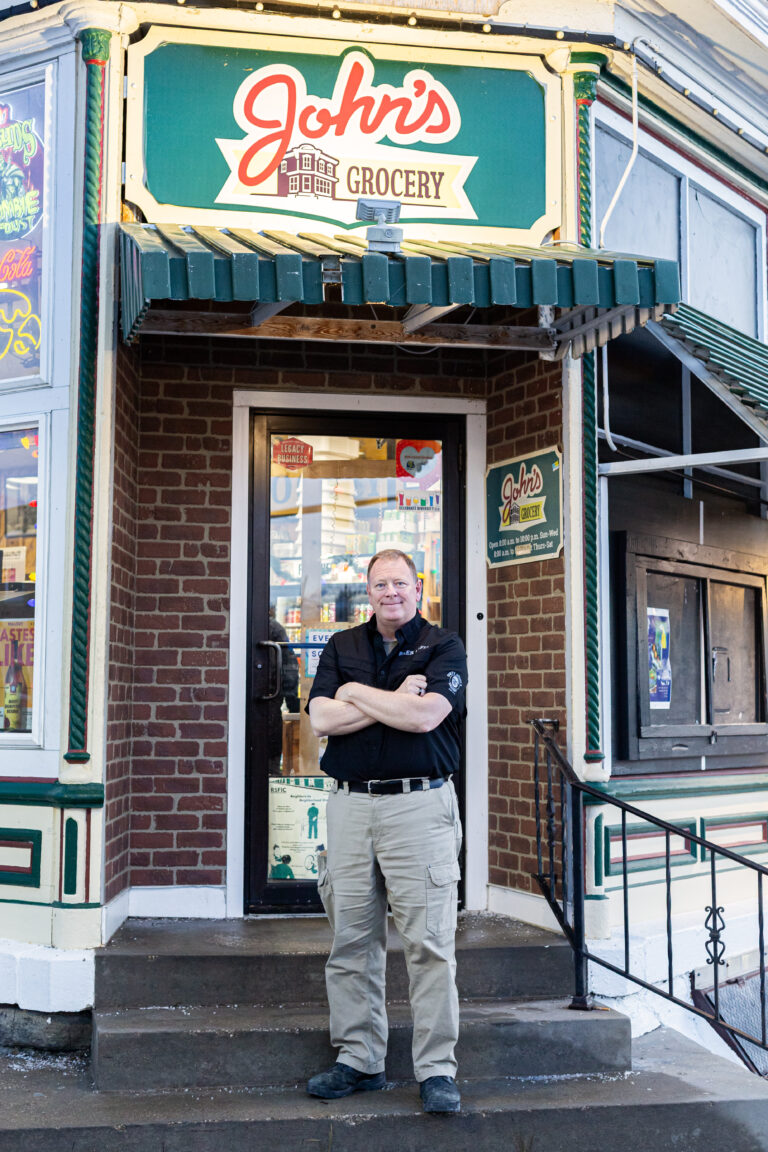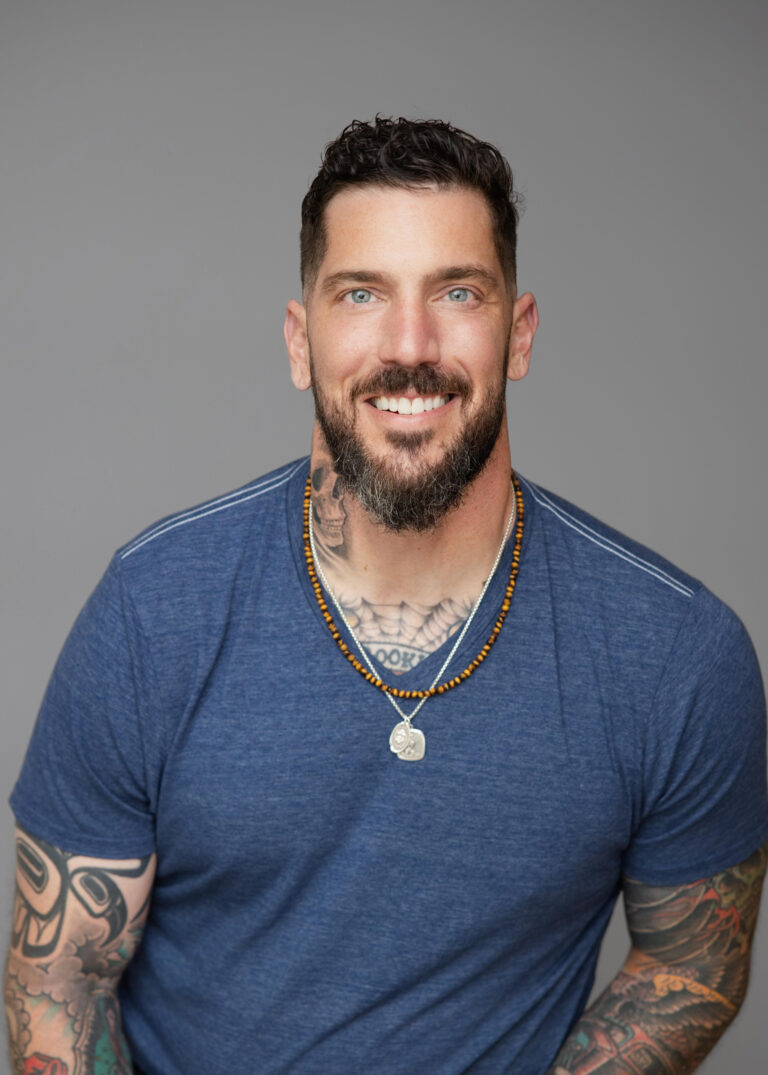Sponsored by MidWestOne Bank, this is the latest edition of the CBJ’s new podcast feature with Nate Kaeding and notable Iowa business and cultural leaders, available first to CBJ members. Listen to this episode below, and subscribe on Spotify, iTunes, Google Play, Stitcher and SoundCloud.
Matt Swift is the serial entrepreneur behind Big Grove Brewery and a ton of other popular Corridor restaurants and bars.
I talk to Matt about his personal formula for success in the restaurant industry, why identifying a need is key to building a successful business, and how segmentation allows for him and his partners to oversee so many projects. Matt also shares the tools he uses to prioritize his tasks and actions, his systems for identifying issues in his company’s workflows, and what the future holds for Big Grove and the craft beer industry.
I learned a lot and I think you will too.
NK: You have so many businesses and projects right now. What does a typical day look like in your world and how do you organize it in a way that allows for success?
MS: It’s always a battle. You’re trying to figure out what to do every day, but we’ve done a really good job of segmenting our business units. I have a ton of business partners and so everybody plays their role and does what they need to do. That’s been more of a recent development. Before, everybody kind of did a little bit of everything, and I think that we realized that’s probably not sustainable for growth. So, we’ve changed the way we’ve approached that and we’ve evolved. Now, we have a group that runs the 30 Hop, Iowa Athletic Club, and Blackstone side of things. Then we have a group that runs the Big Grove, Pullman, and Red’s side of things, and that’s been working really well.
As far as waking up, I wake up and wait for Nate’s first text at six in the morning. No, I just try to game plan my day and try to plan the top three to five things that I want to get done. I would say it’s one out of three days that I actually get all five things done. I’m just trying to move things forward as much as I can and trying to keep on top of the big stuff, but that’s easier said than done.
Can you speak to some of the key learnings you’ve had with Traction Tools and their EOS (Entrepreneurial Operating System) Software, and what it has allowed for you and your businesses to do?
I think Traction has been a game changer for us. We were shown the book by my partner, Dan Bloom, a long time ago. Then, all of a sudden, my buddy Leighton Smith at BerganKDV was like, “Hey, I work with that.” He jumped in and he joined us in our journey at Big Grove, where we first implemented Traction. Immediately, we saw a complete difference in how we performed. Traction, in my quick synopsis of it, is a “get stuff done” list. It keeps you pointed in the right direction at all times. I think, when you’re a business owner or a business leader, you’re gonna find that you get a lot of things thrown your way every day, and it can push you off track really fast.
What Traction says is, “Hey, are these our priorities? Is this what we’re trying to accomplish right now, in this moment, this quarter, this year?” If it doesn’t align, then you should probably either get rid of it or have somebody else take care of it. It seems really simple at service level, but when you boil it down to a business that has a hundred parts, it really helps you because you can keep aligned on your goals. Leighton always jokes around saying, “Be careful what you write on that paper in January, because we know we’re gonna make it true.” I would say that was not the case before. We had a lot of grand ideas, but not all of it came true because we’d get distracted.
We’ve had a lot of breakthroughs with Traction, and I think that it’s also helped not just the top level but levels below. We weren’t clear about the goals for them either. I think that as soon as the whole company adopted the system, it just became clear what our expectations were. The cadence of the meetings can get out of control, and suddenly a manager is in five meetings a week. Where’s the productivity there? How is that really adding value to the customer experience or to my team’s experience? So, we trimmed it down and we just realized how powerful a focused amount of time can be.
What does a weekly Traction meeting look like?
I’ll just do the top level meeting. They’re called “Leadership Team.” That is everybody who runs a business unit, which in our situation would be culinary sales, production of beer, CEO, etc. I play the visionary role in the company. Then it’s human resources and a couple of other departments. You get the idea. Everybody that basically controls what’s happening in the business. They do a good job of breaking the ice and keeping everybody connected.
Then it moves right into Scorecard, which is business metrics to run your business. They give you the example that if you’re on a desert island and you need to know five to 10 numbers that are gonna tell you if your business is performing well, then take a look at that. There’s five minutes on that and if it’s on- or off-track. It doesn’t let you go into all the minutiae of why it’s not working or something. If it’s off-track, do we need to talk about it? Then we go right into Rocks. If you’re not familiar with Traction, Rocks is the quarterly goal that everybody has. So, everybody is going to take a Rock at the quarterly meeting, and then we check in on those weekly to make sure that we’re progressing towards the goal. Like I said, it focuses you on the future and towards your goal.
It all sounds simple, right? But it’s organized and it’s the same every week. Then we do to-do’s which lead to what I would call headlines and issues, and then we rank. So, if there’s 10 things that are on the issues list, we’ll rank those based on importance. Then we spend a lot of time identifying what the issue is. I think that’s probably the step that most companies miss. You could spend half an hour talking about something and not actually identify what the issue is. Once you identify that, it just makes it a lot easier. They’re saying up to 80% of your time could be spent just identifying the issue. It’s a 90-minute meeting. We try to do it earlier in the week so that we have time to adapt throughout the week and adjust anything we need to adjust, but it’s pretty tight. It’s pretty succinct once you get into it.
Those issues have changed as Big Grove has grown. How are your issues today different from your issues in the beginning?
I think back to when we first opened Big Grove in Solon, for example. It’s a restaurant of just under 200 seats when the patio’s open. The big issues back then were, “How long is our food taking? Are we getting our customers the food fast enough? Is our computer system working properly?” You know, it’s timing and experiential stuff. I would say our problems now are much more along the lines of supply chain, inventory management and real manufacturing issues. When you go back to what Big Grove was, it was a restaurant that had a small brewery in the back. Now it’s a manufacturing facility that has a massive restaurant and taproom.
The manufacturing facility has been a complete game changer for us, and I’m really lucky that I have so many competent people on our team that are just really good at what they do. You’re talking about carrying a million dollars of inventory when we used to carry $20,000 worth of inventory. It’s just a complete scale difference. I would say the problems are very similar, but the scale is completely different. I think that’s pretty exciting.
What was your mentality when you stepped into this business? Did you have goals for yourself?
That’s a great question. My mom is a pioneer in some ways. She was one of the first female restaurateurs in the area. She had one of the first sports bars in the area, especially in Coralville. It took off and did really well, and I jumped in the business with her. It was kind of the typical restaurant story, from the grease trap to the dish washing to the busing. All of the stories and beautiful spots. So, when I took over for her, I did not have any intention of taking it to the next level. I thought maybe we could do another place and hopefully that was successful.
I think that’s one of the things that maybe I would have done differently. I would’ve probably figured out how to create that company that could scale out, but we really jumped into it, deal by deal. I think that we just realized, “Hey, we have a formula that’s working here and there’s a lot of opportunity.” We felt people wanted more out of the hospitality industry and it was just time for a little bit more of a change. We pushed on that hard. I think I was really lucky to have great partners.
What is that formula, if you were to boil it down to the top things that go into having a long-standing restaurant?
I think you have to execute. You have to have really good food, really good drinks, and cold beer, and sometimes it’s easy to slip on one of those things. Fundamentally, you have to execute. My mom had a little saying: “You can get a burger anywhere. Why are they coming to your place?” I think they’re going to go for an experience, and we have to make sure that we’re protecting that experience. It’s experiential. It’s execution and it’s in reinvestment. I think that a lot of restaurants and a lot of businesses get tired over the years, and it’s really hard for owners to put money back in. Over the last two to five years, we’ve reinvested in every single company to make sure that the experience is maintained.
The other thing that we do is we want to be a vital member of the community. I think that vital means that we support the community. We’re literally in the middle of the community. That also is a separator, because you become ingrained in the culture of that community. We’re very lucky that we’ve had success with that.
What does the next layer of success look like?
Number one and most important right now is making sure Des Moines opens well. Opening there is by far the largest investment we’ve ever made for the company. It’s going to be a fabulous location, but we want to make sure that it opens right and we’re a net positive of the community we’re entering. From a distribution and sales standpoint, it’s about understanding the data better and playing a little bit more like the big boys play, you know? How do they look at data? How do they analyze data? Where are the opportunities? What are we not seeing?
We came from a restaurant background, so manufacturing and sales on a manufactured good is a whole different game. So, identifying the gaps and opportunities, and making sure that we can fulfill them. It’s a trickle down effect. Every single thing that we do on that side of the business has a reaction. If we increase our distribution by 10%, that’s all well and good, but can we even make the beer? Can we can the beer? Can you store the beer? Do you have enough time to actually make the beer? So yeah, those are the things that we’re trying to analyze now, and I think we’re going to make some big investments in our capacity over the next 24 months. I’m excited about that.
How do you at Big Grove stay in line with, or even ahead of, those potential trends in craft beer?
You let your smart people do their work, I think. We have to let our artists be artists. We have to be aware of the trends. I mean, every time you open the newspaper, half of it is about health and wellness, right? So, we certainly have to adapt to that. It doesn’t mean that we don’t want to make full-flavored beers, but I think that we have to adapt to lighter styles and we have to be competitive in our push on innovation.
I think we’re seeing a lot in the ready-to-drink space, which would be like the vodka drinks. High Noon is an example of that. We’re coming out with one this summer that’s going to be a vodka strawberry lemonade. It’s going to be really cool in a skinny can. It’s going to be beautiful. You can’t lose track of what you are and you have to be able to know that it’s going to change. There was a period where wine was up for 10 years and now wine is down. Beer is going a little bit down right now. Is it going to go back up? Time will tell. The NA (non-alcoholic) space, I think, is something that we’re extremely interested in. We believe that NA can really fill a niche. Sometimes I just want the flavor and I don’t want to drink a beer. I think that’s going to be a huge thing moving forward.
RapidRound
If given a chance, is there another profession that you’d like to attempt?
I really like architecture. I’ve always been drawn to architecture and design, and I’ve always been really interested in that. I like building and designing.
Is there a book that you’re reading currently or an influential book you’d recommend?
The Culture Code. It’s a book about business culture and how it impacts teams. It’s really, really well done. Atomic Habits is a great book as well.
How about podcasts? Anything you’re listening to right now that jumps out?
I’ve been listening to Joe Rogan here and there. There’s a bunch of business ones out there that I like. Scott Galloway’s got a couple that are really good.
What’s one thing you couldn’t live without to have a successful day?
I need to work out in the morning. If I don’t work out in the morning, I find that I’m a little bit off my game and I’m not as focused as I want to be. That’s been a more recent revelation. It puts my head in the right space.
If you had 30 extra minutes in a day, what would you do?
I would be more focused on mindfulness. On top of that, I would take more time to plan.
In one sentence, how do you define success?
Empowering others around me to be successful.







